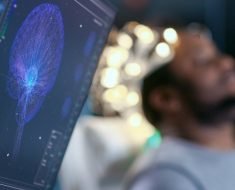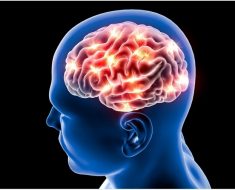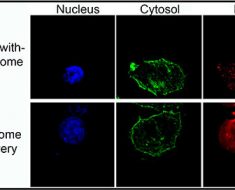
Using current techniques, Alzheimer’s disease, the most frequent cause of dementia, can only be detected once characteristic plaques have formed in the brain. At this point, therapy is no longer possible. However, the first changes caused by Alzheimer’s take place among proteins up to 20 years earlier. A two-tier method developed at Ruhr-Universität Bochum (RUB) can detect the disease at a much earlier stage. The researchers from Bochum have published their report in Alzheimer’s and Dementia: Diagnosis, Assessment and Disease Monitoring.
“This has paved the way for early-stage therapy approaches, where the as-yet inefficient drugs on which we had pinned our hopes may prove effective,” says Professor Klaus Gerwert from the Department of Biophysics at RUB.
Protein folds incorrectly
In Alzheimer’s patients, the amyloid beta protein folds incorrectly due to pathological changes long before the first symptoms occur. A team of researchers headed by Klaus Gerwert successfully diagnosed this misfolding using a simple blood test; as a result, the disease can be detected approximately eight years before the first clinical symptoms occur. The test wasn’t suitable for clinical applications, however. It did detect 71 percent of Alzheimer’s cases in symptomless stages, but at the same time, provided false positive diagnoses for 9 percent of the study participants. In order to increase the number of correctly identified Alzheimer’s cases and to reduce the number of false positive diagnoses, the researchers poured a lot of time and effort into optimising the test.
Second biomarker
They have now introduced a two-tier diagnostic method. To this end, they use the original blood test to identify high-risk individuals. Subsequently, they add a dementia-specific biomarker, namely tau protein, to run further tests with those participants whose Alzheimer’s diagnosis was positive in the first step. If both biomarkers show a positive result, there is a high likelihood of Alzheimer’s disease. “Through the combination of both analyses, 87 of 100 Alzheimer’s patients were correctly identified in our study,” says Klaus Gerwert. “And we reduced the number of false positive diagnoses in healthy subjects to three of 100. The second analysis is carried out in cerebrospinal fluid that is extracted from the spinal cord. Now, new clinical studies with test participants in very early stages of the disease can be launched.”
Gerwert is hoping that the existing therapeutic antibodies will still have an effect. “Recently, two promising major studies have failed, specifically Crenezumab and Aducanumab—not least because it was probably already too late by the time therapy was taken up. The new test opens up a new therapy window.”
“Once amyloid plaques have formed, it seems that the disease can no longer be treated,” says Dr. Andreas Nabers, head of the research group and co-developer of the Alzheimer’s sensor. “If our attempts to arrest the progression of Alzheimer’s fail, it will put a lot of strain on our society.”
Sensor test is simple and robust
Source: Read Full Article





